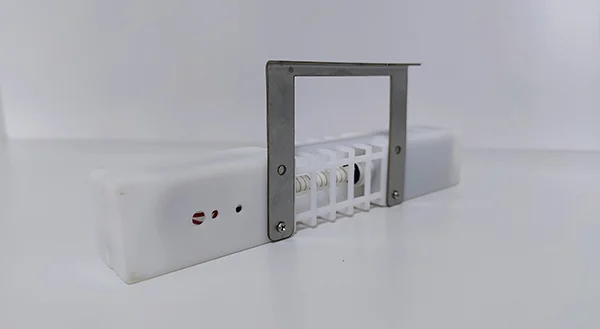- This topic is empty.
-
AuthorPosts
-
02/04/2025 at 14:26 #3545
Mold spores are a persistent issue in indoor air quality, posing significant health risks such as respiratory problems, allergies, and even long-term illnesses. Conventional air purifiers, while effective at trapping particulates, often struggle to neutralize biological contaminants like mold. Plasma air purifiers, leveraging advanced ionization technologies, offer superior performance in removing and deactivating mold spores. In this blog post, as a high performance antibacterial plasma air purifier manufacturer, RUIAIR will share the performance advantages of plasma air purifier to remove mold for sale.
Understanding Plasma Air Purification Technology
Plasma air purifiers utilize bipolar ionization technology to generate positive and negative ions that actively interact with airborne contaminants. These ions initiate chemical reactions with pollutants, breaking them down into harmless compounds. Unlike passive air filtration methods that rely on capturing contaminants, plasma air purifiers proactively neutralize mold spores at a molecular level.
Working principle of Plasma Air Purifier to Remove Mold
1. Ionization of Air Molecules: Plasma generators produce positively and negatively charged ions that disperse throughout the indoor environment.
2. Disruption of Mold Cell Structures: The charged ions interact with mold spores, destabilizing their cellular membranes and effectively inhibiting their ability to reproduce.
3. Formation of Reactive Oxygen Species (ROS): Plasma ionization generates ROS, such as hydroxyl radicals, that oxidize mold spores, leading to their structural degradation.
4. Aggregation and Filtration Enhancement: Ionized particles clump together, increasing their size and making them easier to capture by conventional HVAC filters, further reducing mold spore concentration in the air.

Plasma Air Purifier to Remove Mold Performance Advantages
1. Proactive Neutralization Rather Than Passive Capture
Traditional HEPA filters rely on mechanical filtration, trapping airborne particles as they pass through a dense fibrous medium. However, HEPA filters cannot neutralize mold spores; they only prevent them from recirculating. In contrast, plasma air purifiers actively neutralize mold spores before they settle on surfaces or are inhaled, reducing their viability and preventing future mold growth.
2. Reduction of Surface Contamination
One of the primary advantages of plasma air purifiers is their ability to address mold spores beyond just airborne circulation. Since ionized air disperses throughout a room, the technology helps reduce mold contamination on surfaces, HVAC systems, and other hard-to-reach areas where mold growth can persist unnoticed.
3. Enhanced Airflow Efficiency and Low Maintenance Requirements
HEPA filters require frequent replacement and can create significant airflow resistance in HVAC systems, leading to higher energy consumption. Plasma air purifiers, on the other hand, do not introduce substantial airflow resistance. This translates to lower maintenance requirements and prolonged operational efficiency without the frequent need for filter replacement.
4. Continuous Mold Spore Suppression
Traditional filtration methods operate only when air passes through the filter. However, mold spores can settle on surfaces before being drawn into the filtration system. Plasma air purification ensures continuous suppression of mold spores, actively preventing their proliferation and mitigating their presence in real-time.
5. Reduction of Volatile Organic Compounds (VOCs) Associated With Mold Growth
Mold colonies release volatile organic compounds (VOCs) that contribute to the musty odor commonly associated with mold infestations. Plasma ionization effectively breaks down VOCs through oxidation processes, leading to improved indoor air quality and odor reduction.
Scientific Validation and Industry Adoption
Numerous studies have demonstrated the efficacy of plasma air purifiers in reducing mold spore concentrations. Research published in indoor air quality journals highlights that bipolar ionization can reduce mold spore viability by up to 99% under controlled conditions. Additionally, industries such as healthcare, hospitality, and commercial buildings have increasingly adopted plasma air purifiers due to their superior air sanitization capabilities.
Healthcare Facilities and Mold Control
Hospitals and healthcare facilities are particularly susceptible to mold contamination, which can exacerbate conditions for immunocompromised patients. Plasma air purifiers are widely implemented in medical settings to maintain sterile environments by actively reducing airborne pathogens, including mold.
Commercial Buildings and HVAC Integration
Many large-scale commercial buildings integrate plasma air purifiers into HVAC systems to improve overall air quality and mitigate mold-related structural damage. Since mold growth can lead to costly repairs and liability issues, facility managers prefer plasma air purification for long-term indoor environmental control.
Conclusion
Plasma air purifiers represent a technologically advanced solution for mold remediation, offering significant advantages over conventional filtration systems. By leveraging ionization to neutralize mold spores, reduce surface contamination, and suppress VOCs, plasma air purifiers provide a proactive and energy-efficient approach to indoor air quality management. As industries continue to prioritize healthier indoor environments, the adoption of plasma air purification systems will likely increase, reinforcing their role as a superior alternative for mold mitigation.
http://www.sh-ruiair.com
RUIAIR -
AuthorPosts
- You must be logged in to reply to this topic.